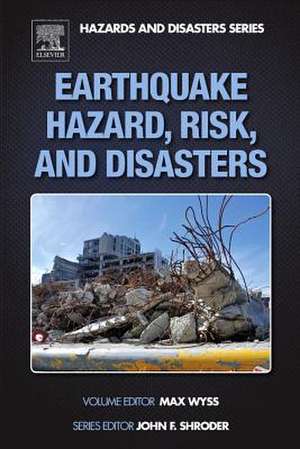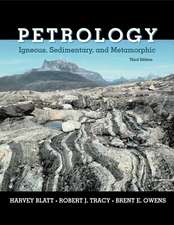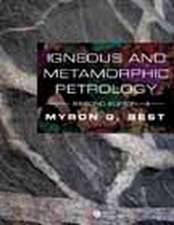Earthquake Hazard, Risk and Disasters
Editat de Rasoul Sorkhabien Limba Engleză Hardback – 12 noi 2014
- Contains contributions from expert seismologists, geologists, engineers and geophysicists selected by a world-renowned editorial board
- Presents the latest research on seismic hazard and risk assessment, economic impacts, fatality rates, and earthquake preparedness and mitigation
- Includes numerous illustrations, maps, diagrams and tables addressing earthquake risk reduction
- Features new insights and reviews of earthquake prediction, forecasting and early warning, as well as basic tools to deal with earthquake risk
Preț: 619.95 lei
Preț vechi: 802.57 lei
-23% Nou
Puncte Express: 930
Preț estimativ în valută:
118.62€ • 124.19$ • 98.16£
118.62€ • 124.19$ • 98.16£
Carte tipărită la comandă
Livrare economică 31 martie-14 aprilie
Preluare comenzi: 021 569.72.76
Specificații
ISBN-13: 9780123948489
ISBN-10: 0123948487
Pagini: 606
Ilustrații: 200 illustrations (200 in full color)
Dimensiuni: 152 x 229 x 36 mm
Editura: ELSEVIER SCIENCE
ISBN-10: 0123948487
Pagini: 606
Ilustrații: 200 illustrations (200 in full color)
Dimensiuni: 152 x 229 x 36 mm
Editura: ELSEVIER SCIENCE
Public țintă
Geoscientists, including seismologists, geologists, and geophysicistsCuprins
1. Protocols for developing imagery-based preliminary damage assessments
2. Earth observation for earthquake risk and damage assessment
3. Disaster risk reduction through the training of masons and public information campaigns: Experience of SDC’s Competence Centre for Reconstruction in Haiti
4. The most useful countermeasure against giant earthquakes and tsunami: What we learned from interviews of 164 tsunami survivors
5. Earthquake risk in SE Asia: Engineering vs human nature
6. Estimating seismic losses in real time and for future disasters
7. Forecasting seismic risk as an earthquake sequence progresses
8. How to render schools safe in developing countries
9. The socioeconomic impact of earthquake disasters
10. The contribution of paleoseismology to earthquake hazard evaluations
11. The role of microzonation in estimating earthquake risk
12. Why the standard probabilistic methods of estimating seismic hazard and risks are too often wrong
13. The ongoing practical benefits of probabilistic seismic hazard assessment
14. Precarious rocks providing upper limits on past ground shaking from earthquakes
15. Quantifying Improvements in earthquake hazard estimates through testable models
16. Duties of earthquake forcasting
17. The experience of real time earthquake predictions on Kamchatka
18. Times of increased probabilities for the occurrence of catastrophic earthquakes: 25 years of the hypothesis testing in real time
19. Review of the nationwide earthquake early warning in Japan during its first five years
20. To what extent can engineering reduce the seismic risk?
24. Decision making under uncertainty: Insuring and reinsuring earthquake risk
2. Earth observation for earthquake risk and damage assessment
3. Disaster risk reduction through the training of masons and public information campaigns: Experience of SDC’s Competence Centre for Reconstruction in Haiti
4. The most useful countermeasure against giant earthquakes and tsunami: What we learned from interviews of 164 tsunami survivors
5. Earthquake risk in SE Asia: Engineering vs human nature
6. Estimating seismic losses in real time and for future disasters
7. Forecasting seismic risk as an earthquake sequence progresses
8. How to render schools safe in developing countries
9. The socioeconomic impact of earthquake disasters
10. The contribution of paleoseismology to earthquake hazard evaluations
11. The role of microzonation in estimating earthquake risk
12. Why the standard probabilistic methods of estimating seismic hazard and risks are too often wrong
13. The ongoing practical benefits of probabilistic seismic hazard assessment
14. Precarious rocks providing upper limits on past ground shaking from earthquakes
15. Quantifying Improvements in earthquake hazard estimates through testable models
16. Duties of earthquake forcasting
17. The experience of real time earthquake predictions on Kamchatka
18. Times of increased probabilities for the occurrence of catastrophic earthquakes: 25 years of the hypothesis testing in real time
19. Review of the nationwide earthquake early warning in Japan during its first five years
20. To what extent can engineering reduce the seismic risk?
24. Decision making under uncertainty: Insuring and reinsuring earthquake risk







